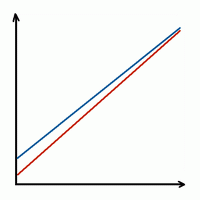Answer the question
In order to leave comments, you need to log in
How is the difficulty balancing of game levels?
I'm wondering how the increase in the complexity of the game from level to level is calculated.
For example, a scroller shooter. At the first level, there is a plane with 100hp and 10 damage. Basic enemy units on the level should be simple and killed with 1-2 shots, that is, have 10-20hp and have the same damage.
But then how to increase the amount of hp and damage, both for opponents and for the aircraft itself, taking into account possible upgrades? And the bosses? I do not take into account the complication of the game by increasing the number of opponents, increasing the speed of their movement or the complexity of the trajectories.
It is clear that during the writing and even after the release of the game, all these indicators are balanced and completed, but how to estimate all this at the design stage? Is there anything to read on this topic, preferably in Russian?
You can also in English, the main thing is not in Danish)
Answer the question
In order to leave comments, you need to log in
Some do this (example for calculating damage / defense):
The developers themselves take the player and swing to each level (themselves manually) as much as possible, as soon as they can qualitatively swing (to that level) and they beat the weakest bot (for example, level 0, which they put 10000+ HP) and record the damage dealt to themselves.
And so they do it for all levels (unless, of course, there are a lot of them).
After that, a graph is made from these “maximums”, and based on this graph, a new graph is formed for future bots, moreover, the initial levels are far from the “maximum”, and the further along the level, the closer to the maximum.

Here comrades write that methodical automatic and manual testing is the best option: gamedev.stackexchange.com/questions/10695/balancing-player-vs-monsters-level-up-curves . Too many factors besides HP and damage.
And yet, does the study of this issue really end with topics in forums and small articles? And there are absolutely no “fundamental” works with formulas and calculations, let them touch on an even wider range of issues?
Balancing complexity is a rather delicate issue and a purely individual one. Much depends on the gameplay and other factors. There are a large number of variations of changes in the level of difficulty of passing the game. For example, quantitative/qualitative decision. Examples for a scroll shooter.
Quantitative :
Airplane in light has 100hp, enemies have 10hp and 10 super bombs.
Airplane in hard mode has 3 hp, no super bombs, flies slowly and enemies have 500 hp.
Those. easy mode - basic, with a more complex one, we "select goodies". (Or vice versa)
Easy to implement.
Quality :
In easy mode, we can control the mouse, damage affects all enemies equally.
In the most difficult - control of the kinect, or voice. Some enemies absorb damage from normal bullets, some counter freeze ones. You can not save during the game, the defeat leads to the deletion of the game. Pause is prohibited.
More difficult to implement, but more interesting.
The selection of parameters occurs by random, miscalculation of formulas, personal predilections, tests, etc.
A full answer to your question will take an entire article, but it seems that you can find quite a few articles on this topic on the Internet, so I won’t go into too much depth.
Didn't find what you were looking for?
Ask your questionAsk a Question
731 491 924 answers to any question